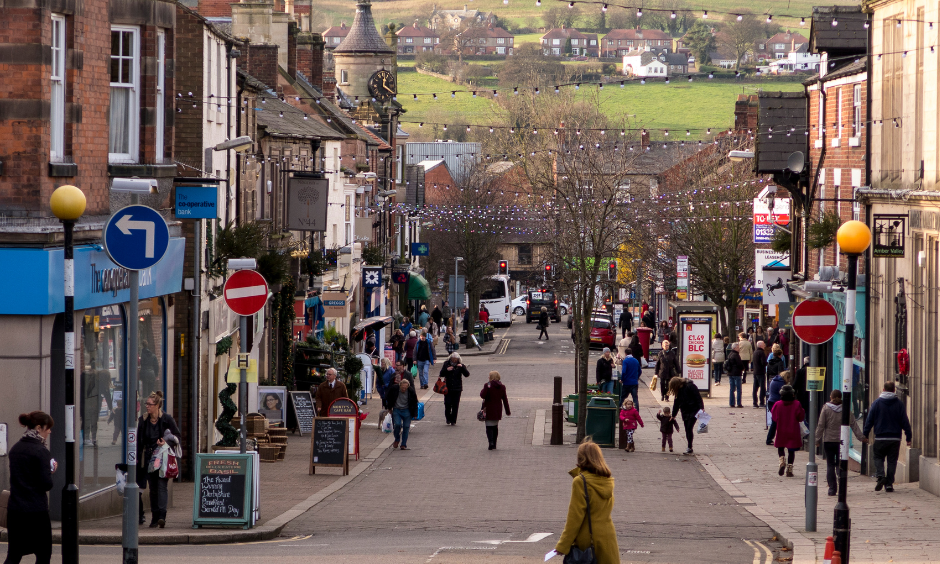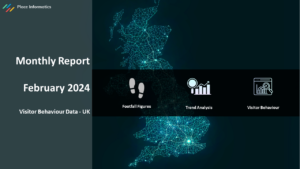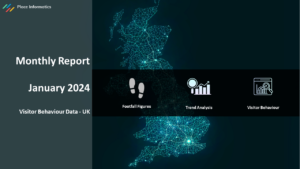Britain is home to a plethora of market towns that date back centuries. With their history, strong sense of community and contribution to the vitality of rural localities, they remain a major part of modern-day society. However in recent years, many have struggled to keep up with the ever-changing trends in consumer habits and travel behaviour.
Subsequently, local authorities are searching for solutions aimed at reviving economic activity and commercial investment into these towns. Our extensive visitor behaviour and footfall data tools provide invaluable insights for better decision-making, helping thousands of towns, cities and counties across the UK maximise resources and ultimately attract more business and visitors.
Here is how mobility data can help market towns analyse visitor behaviour.
Identifying Visitors
Mobility data can be used to identify key visitors in a given catchment area through socio-demographic and postcode analysis. By doing this, councils are able to better understand more about their local population in terms of age range, gender, disposable income, and estimate the percentage of people (locals or tourists) within a 10, 20 or 30 minute boundary from their town – information that traditional surveys are unable to capture at such granular levels.
Determining Spend Profile of Customers
By leveraging mobility data, market towns and businesses can also determine the potential spend profile of customer groups with different needs – from workers and everyday shoppers to tourists. This helps them tailor their marketing, services and products accordingly to attract visitors with different purchasing power levels and buying preferences for various types of businesses (eg: antique stores, groceries, restaurants) based on postcode catchment area or estimated areas of affluence or social deprivation.
Benchmarking & Comparing With Similar Towns
Using mobility data, municipalities can also compare their own town centre with similar ones in terms of retail mix and the market share on a regional and national scale. Knowing which brands or stores have higher visit frequencies than others is essential when it comes to increasing dwell time, building customer loyalty and understanding visitor flow patterns within each town over time.
Ultimately, monitoring daily, weekly, monthly and yearly footfall data helps decision-makers prepare for peak/off-peak seasons, whilst identifying opportunities for business expansion or improvement.
Outline a Town’s Unique Offerings
Footfall data gives an unprecedented level of detail on how visitors (day trippers, commuters and tourists) move around urban environments, time spent in certain locations and the types of places people visit most often.
Through this analysis, market towns can uncover their unique selling points (USPs) to enhance visitor experiences or invest in new developments that would draw even more visitors in. This could include popular daytime activities like museums and cafes, outlining the best walking routes; or exposing hotspots for nightlife such as bars and clubs.
Expose investment opportunities
Finally, mobility data offers powerful visitor behaviour insights which can be used to pinpoint potential investment opportunities for market towns. For example, if there is a specific area that has limited infrastructure but still experiences high levels of pedestrian activity, footfall analytics can support funding initiatives for road improvements or parking facilities that would enable even more customers to visit the area.
Additionally, retail and leisure brands are able to determine which properties will offer the greatest return on investment, allowing them to choose strategic locations for new stores. This balances the commercial real estate portfolio composition in market towns, whilst ensuring that future investments not only attract more brands, but also better serve their goals and interests.
Unlock Growth For Your Market Town
In short, mobility data is an invaluable source for insights into visitor behaviour that can be used by councils, businesses and DMOs alike. By taking advantage of our footfall analysis tools today, market towns can monitor visitor preferences and trends and stay one step ahead for many more years to come.
Call Place Informatics on 0161 706 1343, or book a demonstration for a walkthrough of the data for your destination here:
https://calendly.com/clive-hall/diary-booking
Join us for our next Tourism webinar entitled ‘Understand Tourism Behaviour In Your DMO Using Location Data’ on Thursday 30 March 2023 from 12 – 12.30pm. Contact support@placeinformatics.com to book your place.






